
How might we improve hospital discharge experiences for heart failure (HF) patients?
︎Partner:
MIT Agelab
︎Category: Service Design, UX
︎Type: Academic/Collaborative
︎Time: 8 weeks
︎Category: Service Design, UX
︎Type: Academic/Collaborative
︎Time: 8 weeks
︎Skills: Research, User Interview, Ideation, Mid-fidelity Prototype
︎
Why?
35 million people are discharged from hospitals in the US annually.
20% of Medicare beneficiaries experience an unplanned hospital readmission.
1 million hospitalizations are attributed to heart failure annually, which adds up to 6.5 million hospitalization days in the United States, with an estimated cost across the system of 37.2 million per year.
20% of Medicare beneficiaries experience an unplanned hospital readmission.
1 million hospitalizations are attributed to heart failure annually, which adds up to 6.5 million hospitalization days in the United States, with an estimated cost across the system of 37.2 million per year.
One of the common driving forces behind high rates of re-hospitalization is patient “non-compliance”, a medical term for patients who fail to follow instructions on post-hospitalization care—a patient communication and education issue.
Our team refuse to blame patients but challenged it as a communication design problem. To identify specific pain points, we investigated the critical communication episode during a typical hospitalization—the patient discharge process.
Our team refuse to blame patients but challenged it as a communication design problem. To identify specific pain points, we investigated the critical communication episode during a typical hospitalization—the patient discharge process.
Refining the Problem
Our team refined the problem by reviewing recent medical and healthcare literature and narrowing our patient population of interest to the most relevant and prevalent case study in US—heart failure.
The communication problem behind patient-hospitalist at the point of discharge can be broken down to two driving forces:
The communication problem behind patient-hospitalist at the point of discharge can be broken down to two driving forces:
- Complex stakeholder involved in discharging a patient
- Lack of clarity, concision, comprehension, and coordination of the communication medium, which are often large stacks of paper.


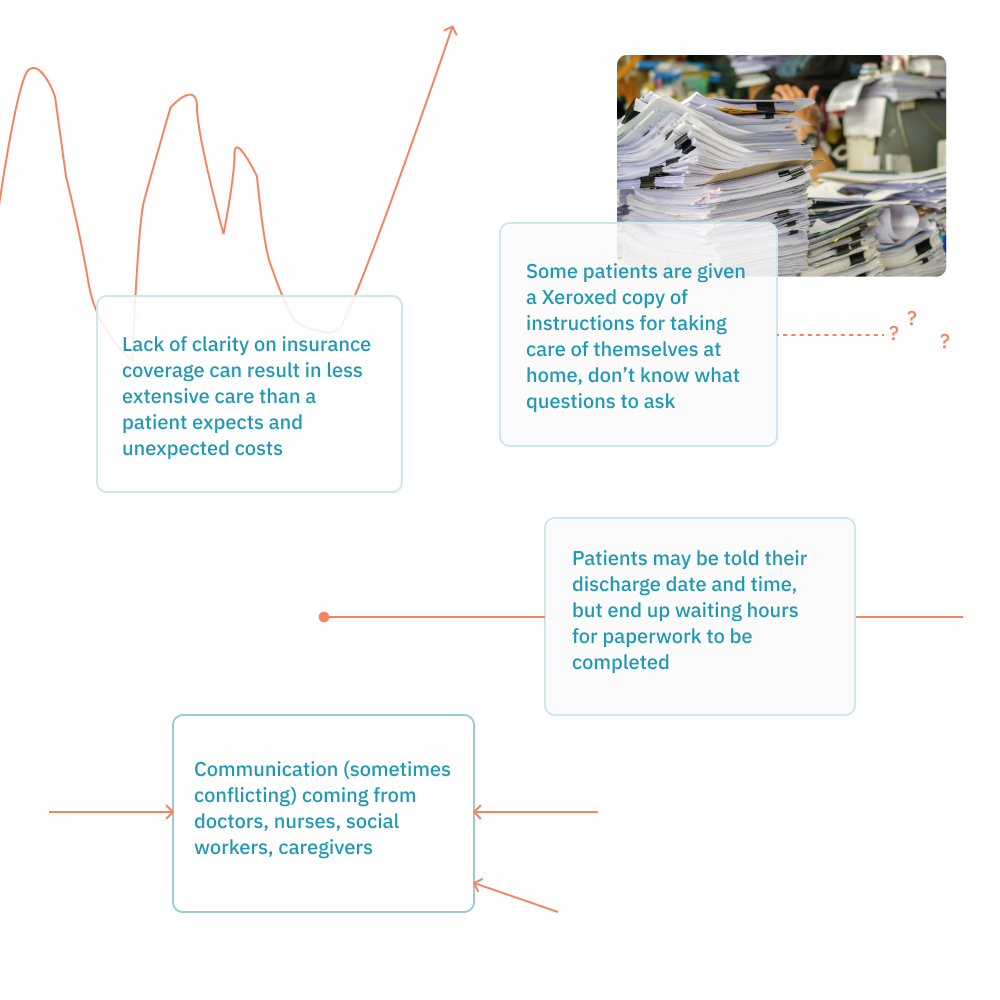
—There is a communicative gap among...
︎Caregivers
Caring for the patient at home in their everyday lives and often assisting the patient with mobility and health management post-hospitalization.
︎Patient
Striving to navigate care landscape to recover quickly and with fewer chances of rehospitalization
︎Healthcare Providers
Providing healthcare to individual patients while keeping pace with other demands of the health care system
Caring for the patient at home in their everyday lives and often assisting the patient with mobility and health management post-hospitalization.
︎Patient
Striving to navigate care landscape to recover quickly and with fewer chances of rehospitalization
︎Healthcare Providers
Providing healthcare to individual patients while keeping pace with other demands of the health care system
︎
How?
User Research & Empathy Fieldwork
We began our research with empathy fieldwork by simulating the everyday challenges of the elderly, from dexterity to medication management. Next, we interviewed 4 elderly patients for user insights, as well as 3 stakeholders and 2 experts to give us additional insights into current solutions in the field.
The key insights derived from these interviews were compiled (see below). Some critical concepts that were frequently highlighted include:
- Continuum of patient care
-
Preemptive education on post-discharge care
- Coordination with caregivers

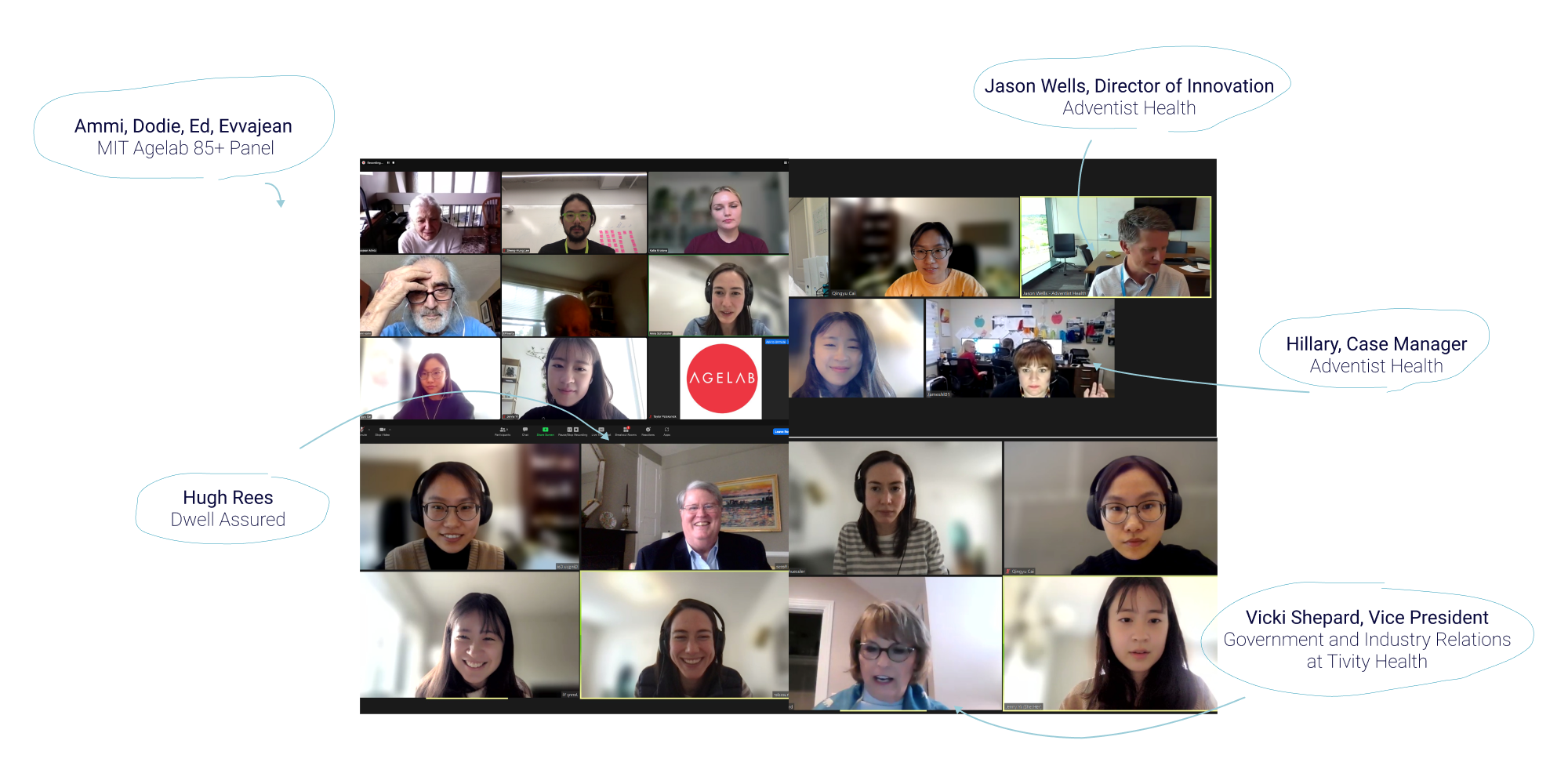

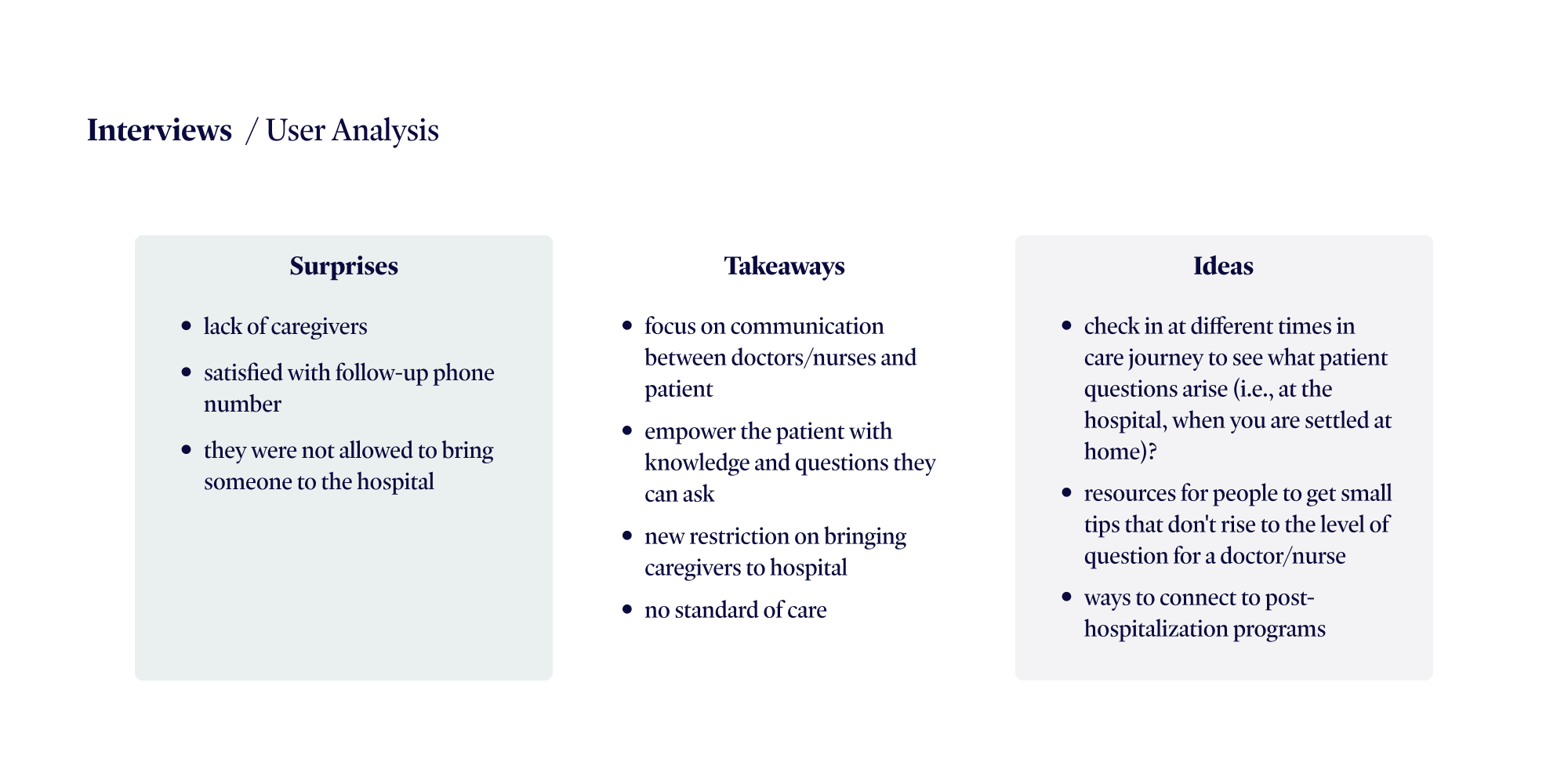

User Journey & Opportunities



︎
What?
Be the continuum of care for HF patients as the end-to-end aggregator of services and tools that guides them on a path to a new normal.



︎
Phase 0
Introducing Patients to Path
A conversational interaction:
Experience a back and forth to avoid the clinical “form filling”, yet it maintains professionalism and concision.
Phase 0
Onboarding
Introducing Patients to Path
A conversational interaction:
Experience a back and forth to avoid the clinical “form filling”, yet it maintains professionalism and concision.
︎
Phase 1
Features that manage the diagnostic process, understand the health condition, and prepare for life changes.
![]()
Phase 1
Diagnosis
Features that manage the diagnostic process, understand the health condition, and prepare for life changes.



Organization Concept
The experience feels directional and intentional. They are on a path to getting back on track with health and normal life.
The experience feels directional and intentional. They are on a path to getting back on track with health and normal life.
︎
Phase 2
Features that educate on health management, costs, and prepare for discharge.
![]()
Phase 2
Pre-treatment
Features that educate on health management, costs, and prepare for discharge.


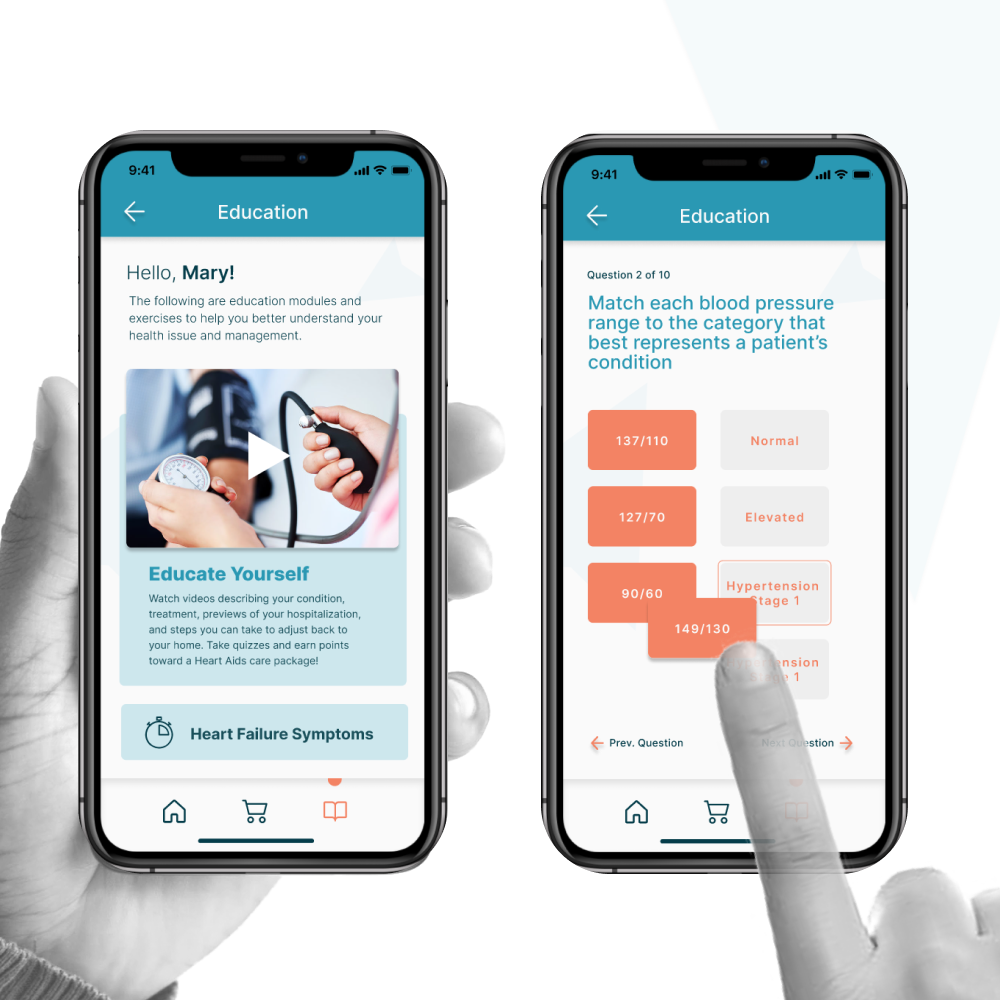
Education Concept
Informative, concise, but engaging and interactive. We can learn from game design in delivering educational information in a precise but non-intimidating way.
Informative, concise, but engaging and interactive. We can learn from game design in delivering educational information in a precise but non-intimidating way.
Marketplace
One Stop Shop,
Customizable to the specific needs of each patient.
![]()
One Stop Shop,
Customizable to the specific needs of each patient.


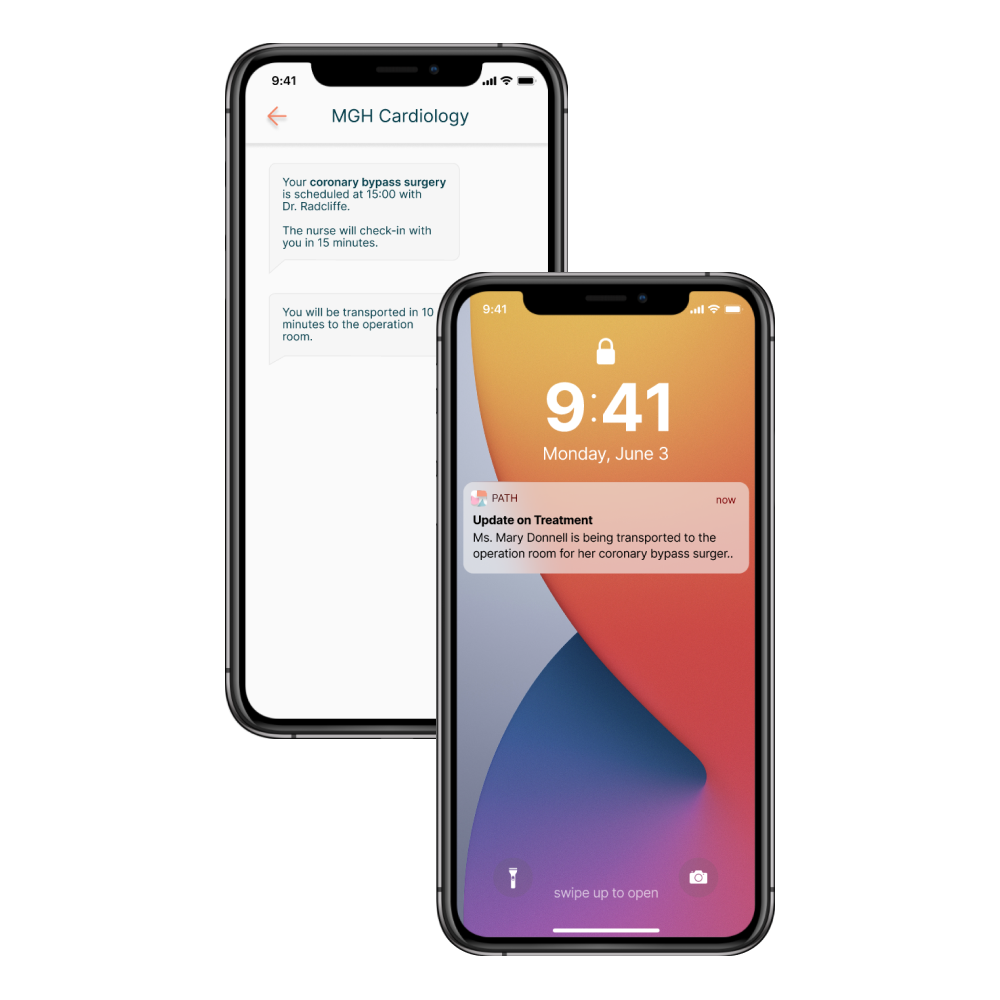
︎
Phase 3
Introducing Patients to Path
Features that keep care provider team, patients, and caregivers on the same page.
![]()
Phase 3
Treatment
Introducing Patients to Path
Features that keep care provider team, patients, and caregivers on the same page.

︎
Phase 4
Features that assist in regaining autonomy, emotional recovery, and connecting to community resources.
![]()
Phase 4
In-patient Stay
Features that assist in regaining autonomy, emotional recovery, and connecting to community resources.
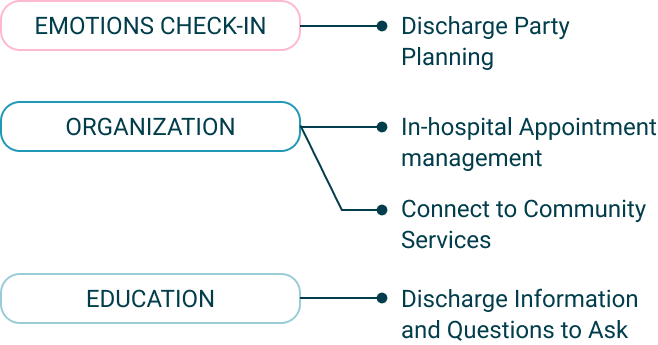
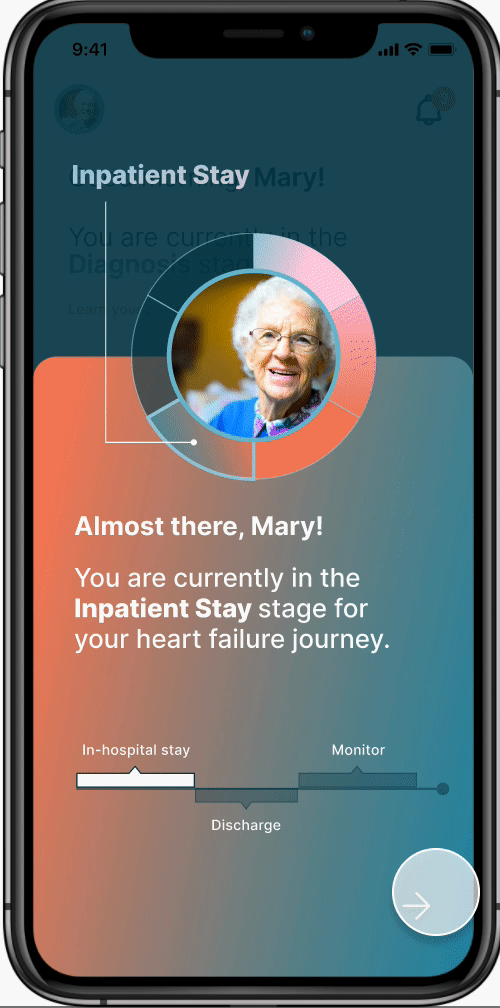

︎
Phase 5
Features that streamline coordination, patient education, and celebrates discharge.
![]()
Phase 5
Discharge
Features that streamline coordination, patient education, and celebrates discharge.
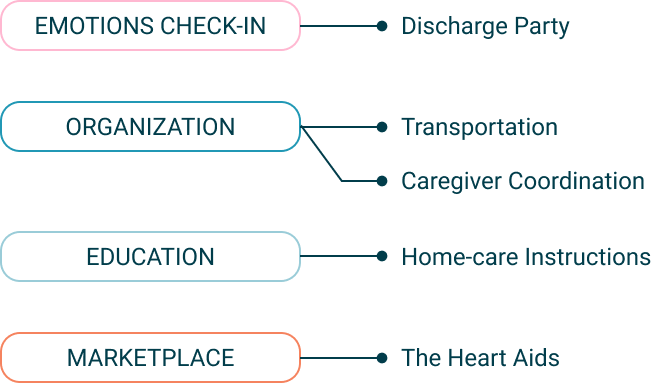
Concept
Tailored package of goods and services that fulfill needs in emotional and physical health delivered straight to your home—welcoming you back.
![]()
Tailored package of goods and services that fulfill needs in emotional and physical health delivered straight to your home—welcoming you back.

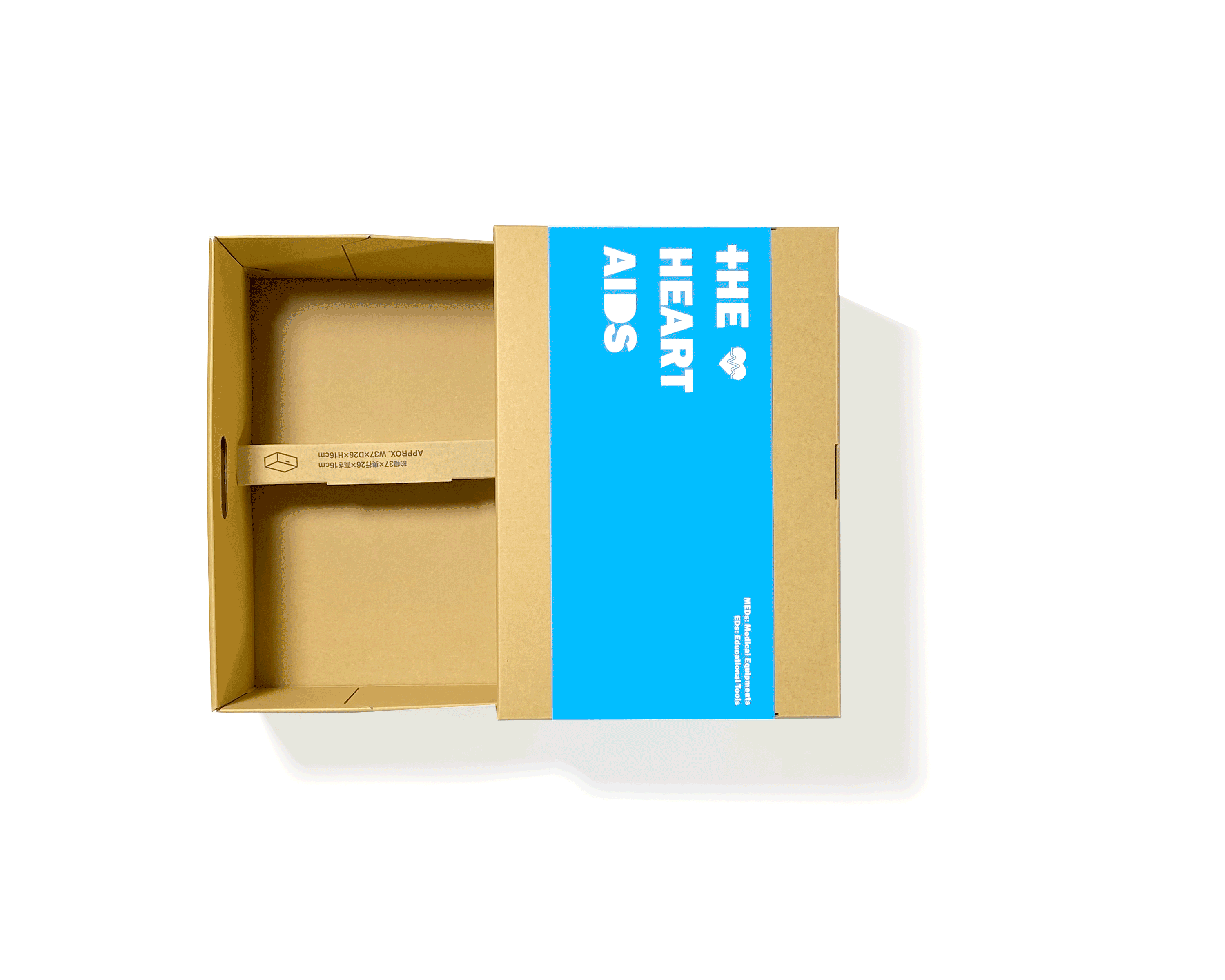
︎
Phase 6
Features that manage appointments, tracks and reinforce good habits for a healthy recovery.
![]()
Phase 6
Monitor
Features that manage appointments, tracks and reinforce good habits for a healthy recovery.
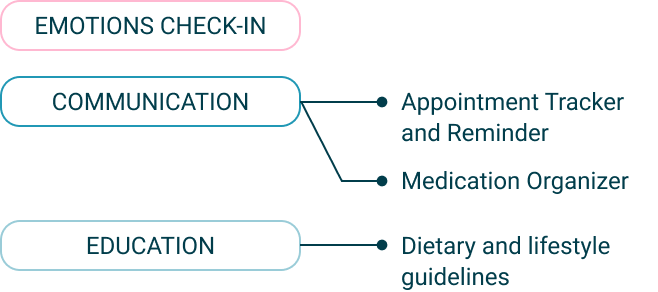
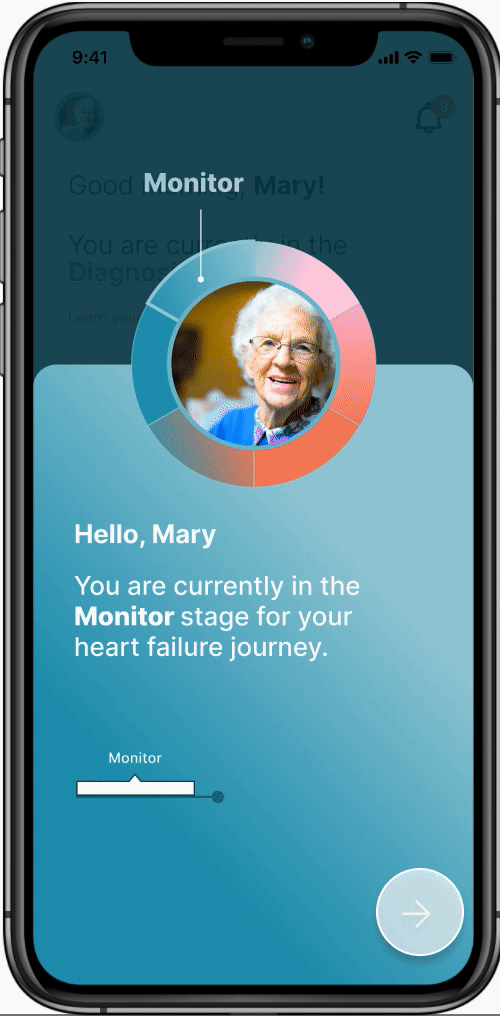
Mapping of Content by Phase

︎
What’s Next?
A patient’s informational needs are unique to his or her stage in a health episode. To bridge the communicative gap between patients and providers, this project has demonstrated how automated software (chatbot) and tangible artifacts could extend healthcare into patient’s homes—for continuous care.
PATH is a service attending to 3 facets of patient needs facing a life-changing health episode: emotional, informational, and medical equipment.
There are two potential parties to implement this service:
1. Market to Health Care System: Work with health care system to understand how these tools can shorten lengths of stay and reduce readmission rates.
2. Market to Product Vendors: Work with vendors of products that can appear in the Path app and the HEART Aids.
With this project as the north star vision, I hope to further discover the MVP version of this service by conversing with industry experts in hospital management and medical device vendors.
PATH is a service attending to 3 facets of patient needs facing a life-changing health episode: emotional, informational, and medical equipment.
There are two potential parties to implement this service:
1. Market to Health Care System: Work with health care system to understand how these tools can shorten lengths of stay and reduce readmission rates.
2. Market to Product Vendors: Work with vendors of products that can appear in the Path app and the HEART Aids.
With this project as the north star vision, I hope to further discover the MVP version of this service by conversing with industry experts in hospital management and medical device vendors.

